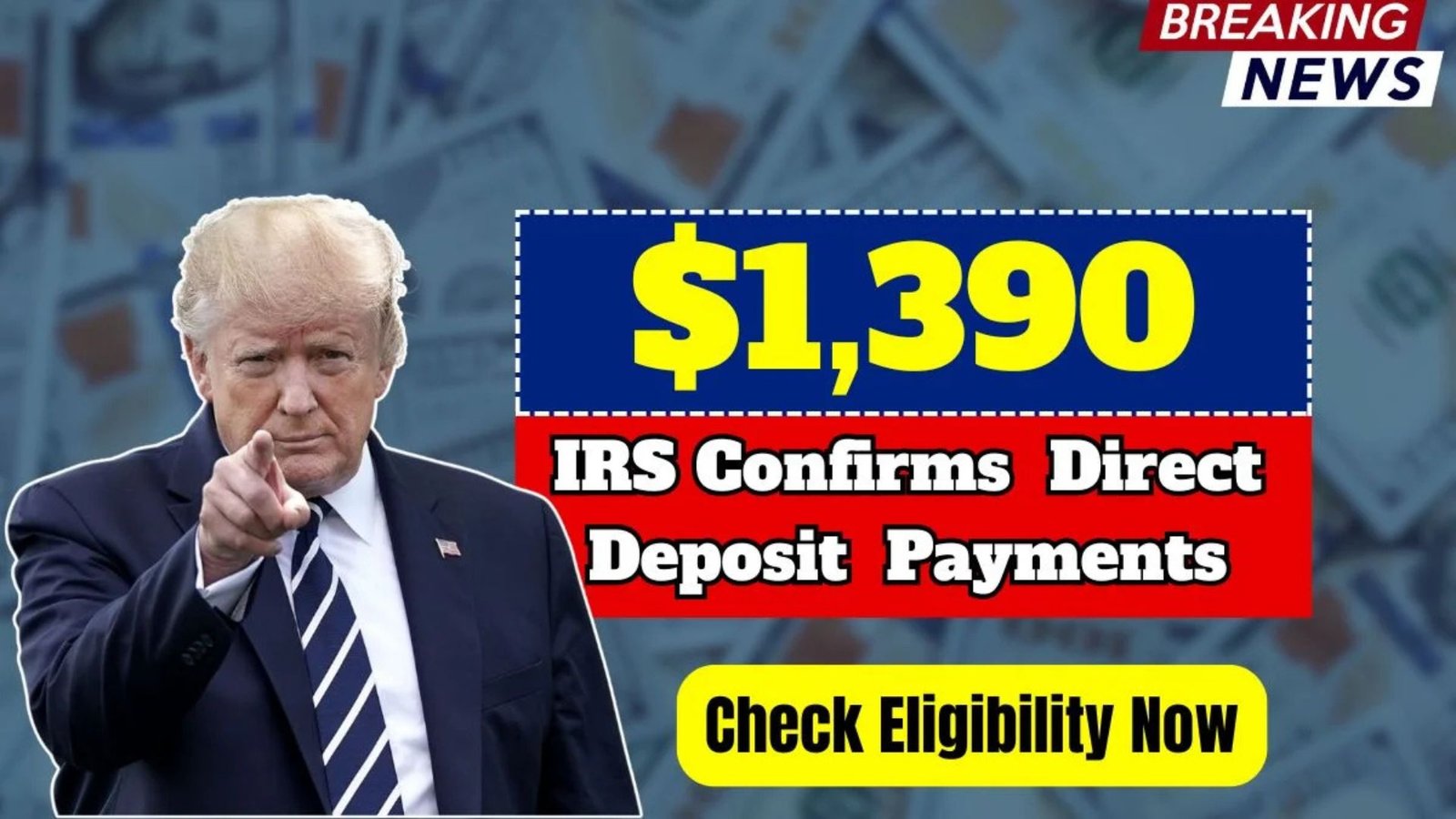Millions of Americans just got an unexpected announcement — the IRS has confirmed $1,390 Direct Deposit Relief Payments, and the news is spreading fast. These payments could hit bank accounts sooner than you think. But who qualifies, and how can you ensure you don’t miss out? Let’s uncover the truth behind this much-talked-about relief.
What Is the $1,390 IRS Relief Payment?
The $1,390 IRS relief payment is part of a new wave of federal financial assistance aimed at helping Americans cope with ongoing economic challenges. Unlike past stimulus checks, this payment targets specific groups based on income, tax filing status, and benefit eligibility, making it crucial to understand whether you qualify.
The Origins of the Relief Program
The IRS relief initiative stems from continued efforts to provide financial stability after inflation, high living costs, and pandemic aftershocks. Lawmakers approved additional support for low- and middle-income Americans, retirees, and individuals receiving Social Security, SSI, SSDI, or VA benefits. These payments aim to fill the gaps left by previous rounds of stimulus aid.
Why It Matters Now
With rising costs of groceries, rent, and utilities, this relief couldn’t have come at a better time. The IRS $1,390 direct deposits are expected to help millions of households manage essentials and boost spending power. What makes this round particularly exciting is that it’s automatic for many taxpayers, requiring little to no paperwork.
Who Is Eligible for the $1,390 IRS Payment?
Eligibility depends on several factors, including annual income, tax filing status, and benefit type. The IRS has outlined the main groups expected to qualify.
| Category | Eligibility Details |
|---|---|
| Single Filers | Income under $75,000 per year |
| Married Couples | Combined income under $150,000 |
| Head of Household | Income under $112,500 |
| Social Security / SSI / SSDI Recipients | Automatically eligible |
| VA Benefit Recipients | Automatically eligible |
| Non-Filers | Must register through IRS non-filer portal |
If you received previous stimulus checks or regularly get benefits via Direct Deposit, there’s a strong chance the $1,390 will reach your account automatically.
How and When Payments Will Be Sent
According to the latest IRS schedule, Direct Deposits are expected to roll out in phases. Paper checks may take longer.
| Payment Method | Estimated Delivery Date |
|---|---|
| Direct Deposit | Within 3–4 weeks of IRS processing |
| Paper Check | Up to 6–8 weeks after processing |
| EIP Card (Prepaid) | Sent to select recipients only |
You can check your status by visiting the IRS “Get My Payment” tool and logging in with your tax information.
Important Details You Shouldn’t Miss
- No new application is required if you’ve filed taxes recently.
- Payments are not taxable and will not affect future benefits.
- Watch out for scams — the IRS never asks for personal info over email or text.
- If your banking info changed recently, update it on your tax return immediately.
Expert Insights on the $1,390 Payment
Tax experts suggest this relief could provide short-term financial ease while giving insight into the government’s ongoing economic support strategy. Analysts note that recurring, smaller payments may replace traditional stimulus checks, targeting those most in need.
FAQs: Common Questions Answered
Q: Is this the same as the 2025 stimulus payment?
A: It’s related but not identical. This relief is part of a targeted assistance plan handled directly by the IRS.
Q: Do I need to apply?
A: Most recipients won’t. However, non-filers or new beneficiaries should check the IRS portal for updates.
Q: Will it affect my tax refund or credits?
A: No. The payment is separate from your refund and other credits.
Conclusion: Don’t Miss This Relief Opportunity
The IRS $1,390 Direct Deposit Relief Payment represents real help for those feeling financial strain. Whether you’re a retiree, worker, or benefits recipient, this payment could land in your account soon. Double-check your eligibility and stay alert for official IRS updates — your relief could be closer than you think.

